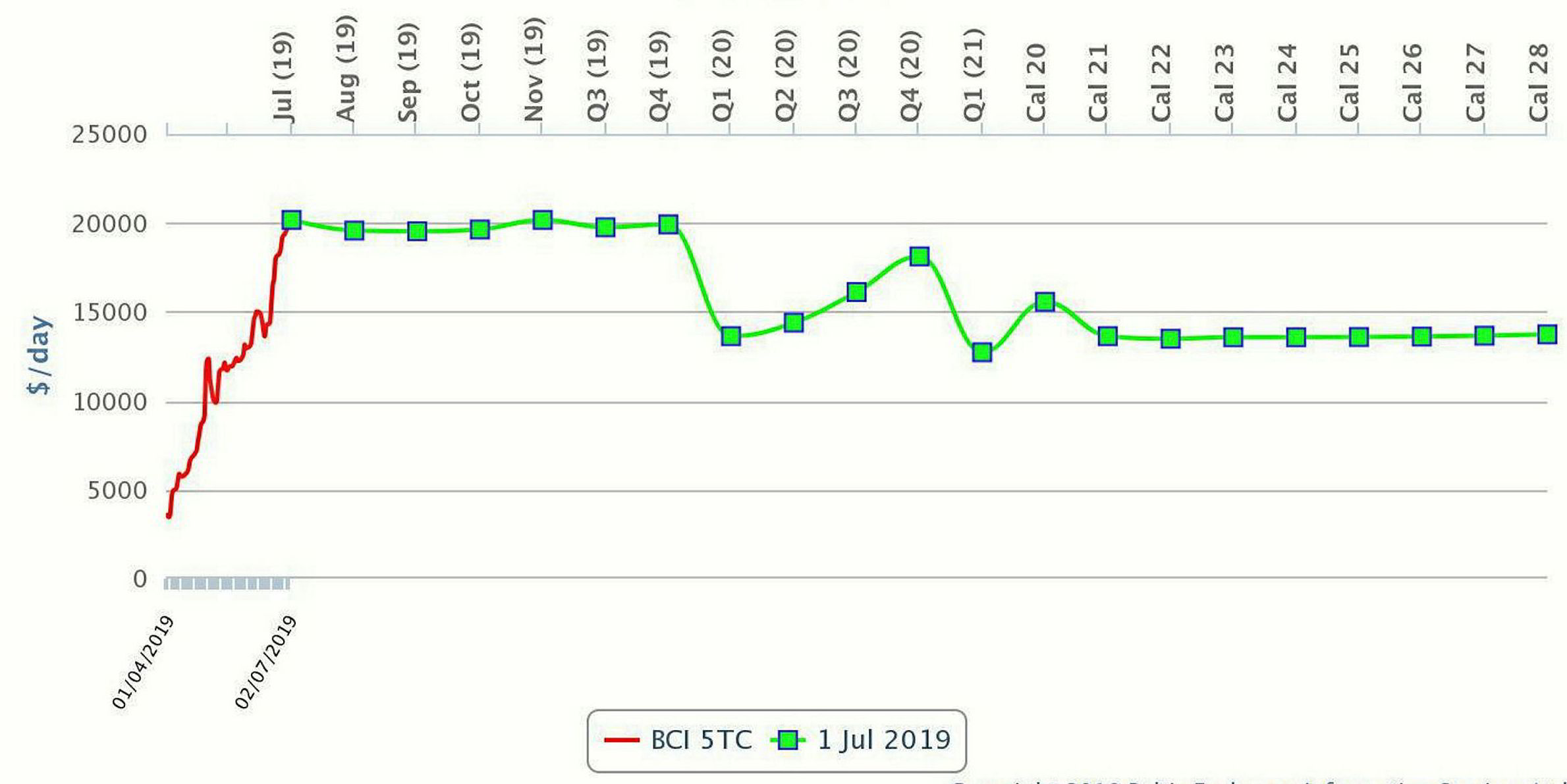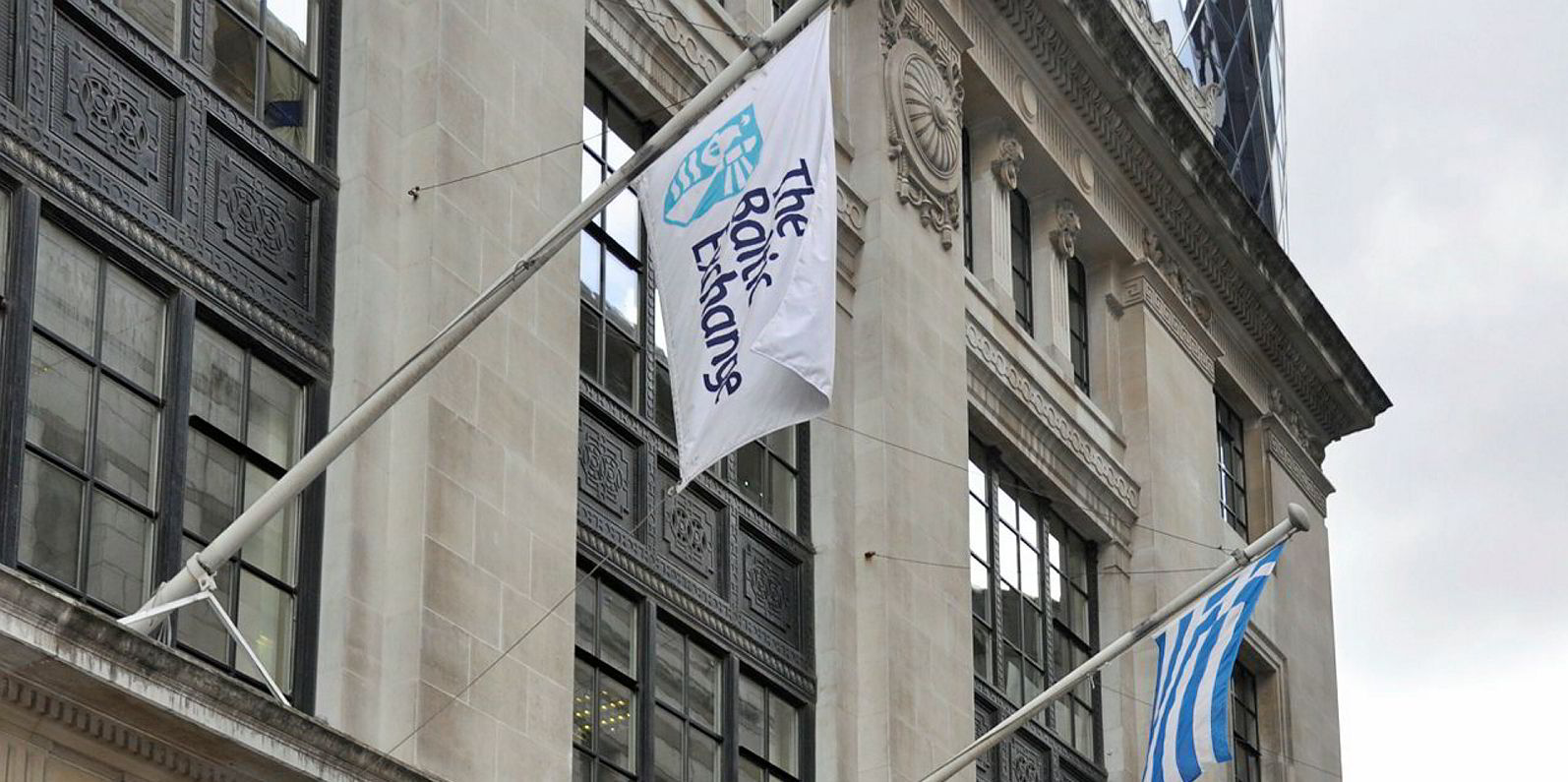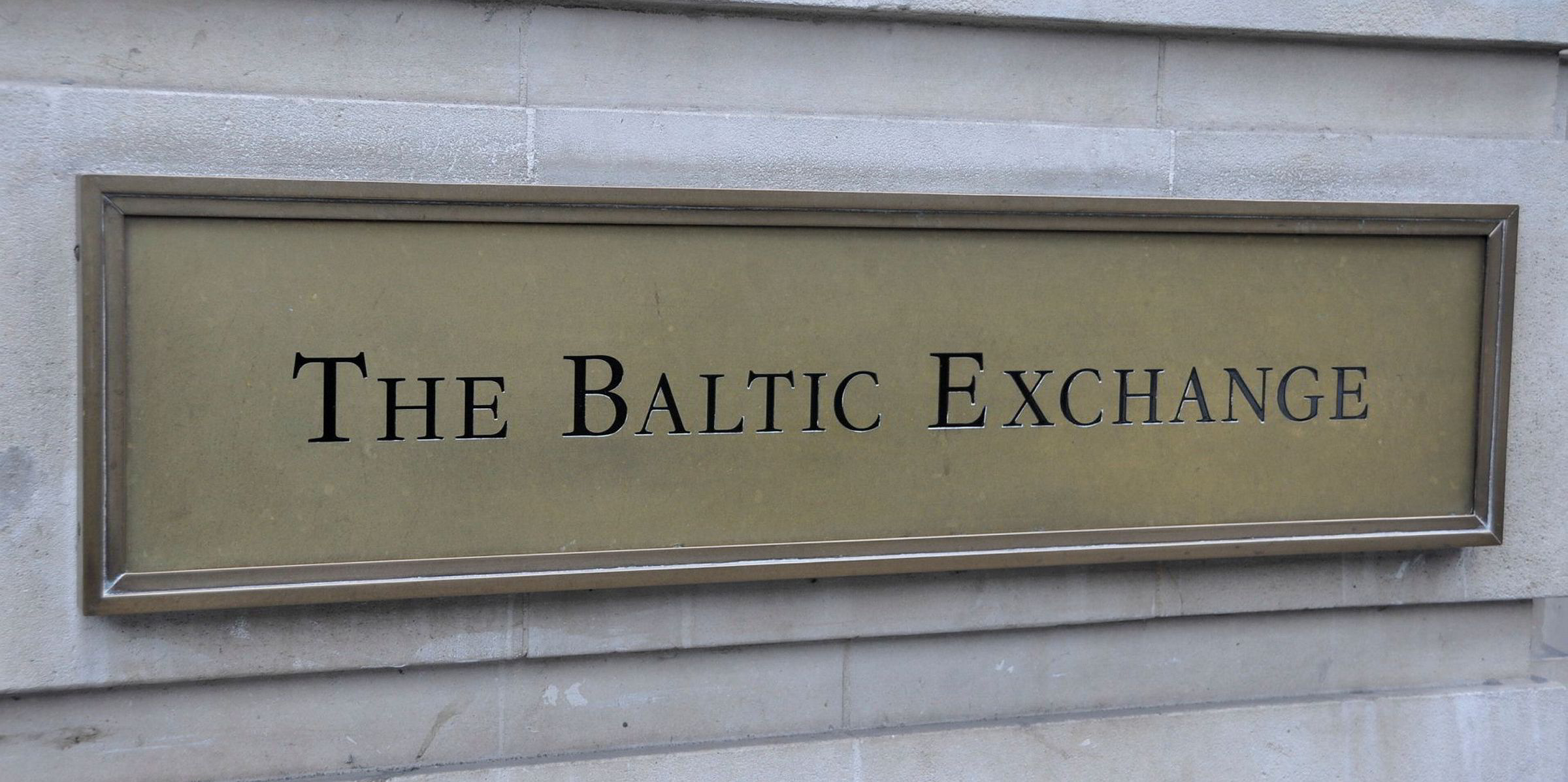Rising capesize spot rates have boosted the forward freight agreement (FFA) market by up to 10%, while clearing and options trading take a breather.
The Baltic Exchange’s capesize timecharter settlement was assessed at $21,076 per day on Tuesday, a $1,252 rise on Monday's rate and the highest level seen since August last year.
Capesize spot rates have been supported by mainly short tonnage lists in the Atlantic.
Reported fixtures show signs of slowing activity out of Australia, yet spot rates are still climbing along with iron ore prices.
Iron ore has surged to more than $100 per ton on the back of supply disruption in both Brazil and Australia.
FFA bull run
Positive sentiment for the cape market has had a knock-on effect on FFA trading, although physical contracts are currently trading at slightly higher rates than paper contracts for the next three months.
The Baltic's forward assessment for its five capesize benchmarks (5TC) for July was assessed 10% higher at $20,163 per day on Monday, compared to the previous week.
August and September contracts for 5TC were assessed 9% and 8% higher on Monday at $19,563 and $19,529 per day respectively, according to Baltic figures.
The outlook looks firm for the second half of 2019, with 5TC contracts for the rest of the year flirting with the $20,000 per day level.
Third quarter contracts rose 9% in Monday's assessment to $19,751 daily.
Contracts for the fourth quarter got a more modest boost of 4% on Monday and were assessed at $19,917 per day.

Paper contracts for all individual major routes were assessed at higher levels this week, with progress particularly being seen on the Baltic's Bolivar-Rotterdam (C7) route.
C7 contracts for the current month were assessed at $1.83 higher on Monday at $10.54 per tonne, slightly below the assessment for physical contracts, which was $10.77 per tonne today.
The incremental return of Brazilian iron ore exports and bullish iron ore prices are fuelling the rise.
The Baltic added a further $0.95 and $0.80 per tonne to its C7 assessments for August and September contracts respectively on Monday.
Clearing
Clearing activity has been industrious in recent weeks as the settlement price has risen, but on Monday saw a sharp contraction in activity.
The total volume of cape FFAs cleared so far this year is 37% higher than the total cleared at this point in 2018.
Last week saw 11,509 lots being cleared as of 24 June, a 58% rise on the previous week.
But in Monday's assessment, this rampant activity saw a 23% reduction with just 8,865 lots being cleared in the seven days to 1 July.
There was also a massive downturn in clearing cape FFA options, which fell 86% on the previous week’s estimate to 1,495 lots.
Open interest for cape FFAs totalled 80,236 lots on Monday, around a 4% decline on the previous week's assessment, which corrected the growth in open interest seen over the previous two weeks.
A pop of activity has been seen in over-the-counter FFA trades, with 45 lots being traded over the past week to reach a level of 75 lots as of Monday.
Open interest in capesize options remains at some of the highest levels seen since May 2016, according to historic Baltic Exchange data.
This is despite a week-on-week contraction of 2,794 lots, which lowered the open interest level to 157,872 lots as of Monday.
Spot market
Spot markets saw another stronger day on Tuesday with gains seen on all the Baltic Exchange's benchmark routes, particularly for trips to China from Brazil (C3).
The Baltic Capesize Index was assessed at 160 points higher than on Monday at 2,717 points, its highest level since August 2018.






